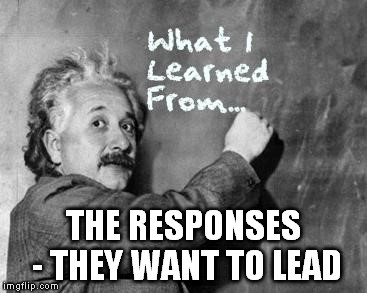
We started the #Push/Pull exploration as a follow up to ELGL’s Glacial Pace and ICMA’s Women_Leading_Government articles. The percent of women leading local government organizations has not increased from 1984 until today. The Push/Pull series has been Kim Sandoval’s attempt to discover where those leaving local government service – both women and men – have gone.
I wrote the survey to gain perspective from individuals that had been employed with local government but re-routed their paths into new fields – to find an answer about where the women that should be filling these missing percentages have gone, what they are doing and would they return under the right circumstances? This question is particularly important as local government prepares for the eminent retirement of so many current leaders from the baby boom generation. If we have public servants from Gen X and the Millennial generations that chose to move into other fields, would they be willing to return to local government and assume leadership roles?
When I investigated, the answer from the data was a resounding “YES”! As you can see from the pie chart, this group of respondents overwhelmingly – 80% – said that they would consider returning to local government leadership.
 With this result and our #13percent issue in mind, the next step was to look by gender, and the answers are positive. About 4 out of 5 females stated they’d return to local government leadership while 3 out of 4 males said the same. The responding men were actually less likely to return to local government leadership, as a percentage of reported gender, than were women.
With this result and our #13percent issue in mind, the next step was to look by gender, and the answers are positive. About 4 out of 5 females stated they’d return to local government leadership while 3 out of 4 males said the same. The responding men were actually less likely to return to local government leadership, as a percentage of reported gender, than were women.
When we look at the responses based upon the field in which are respondents are currently employed, we see an interesting trend. 31 of our 135 are now in a different role but are still in local government. Six more respondents are now working in ‘other local government’ for a combined total of 37 or 27% of our respondents. Of those, 33 said they’d consider a local government leadership role. Based on this, it seems many of our respondents have transitioned their service from one jurisdiction to another. In addition, there were 37 more respondents that are now in consulting roles related to government, non-profits and even corporate/business roles that would consider returning to local government leadership.
But did females answer differently than males? If we break the responses out as a percent responding by gender and look at it with our respondents’ current position, there are similarities. Some of the differences relate simply to the differences in the number of responses by gender.
It’s interesting to note that members of both genders still in local government report that they would be interested in a local government leadership role. Of respondents that now work in ‘other local government’ all were interested in leadership – there weren’t any nos. For those that still work in local government but a different role, there were more respondents interested in a leadership position than in those that were not.
If we look at the responses by previous level of service, we see that there are 38 female and 6 males that served in the ‘other’ level of government that would be interested in a ‘return to local government leadership’. Although I wrote the survey to see if former executives and senior managers would return to local government, it appears we’ve actually heard from many professionals beginning their careers. Based on their responses, they appear to aspire to leadership roles. Perhaps this graph illustrates better than any other the desire and interest of the next generation to lead.
 These numbers provide us with a snap shot of a group of 135 current and former public servants that have a strong connection to local government. As CAOs and senior managers work with them, we need to continue to develop that interest and cultivate their individual leadership skills. The graphs help quantify their numbers, and there’s been more data than I originally expected. In the next report I’ll share some voices and comments from the survey. I’ll also look briefly at responses from the more seasoned professionals to gain their perspectives.
These numbers provide us with a snap shot of a group of 135 current and former public servants that have a strong connection to local government. As CAOs and senior managers work with them, we need to continue to develop that interest and cultivate their individual leadership skills. The graphs help quantify their numbers, and there’s been more data than I originally expected. In the next report I’ll share some voices and comments from the survey. I’ll also look briefly at responses from the more seasoned professionals to gain their perspectives.




